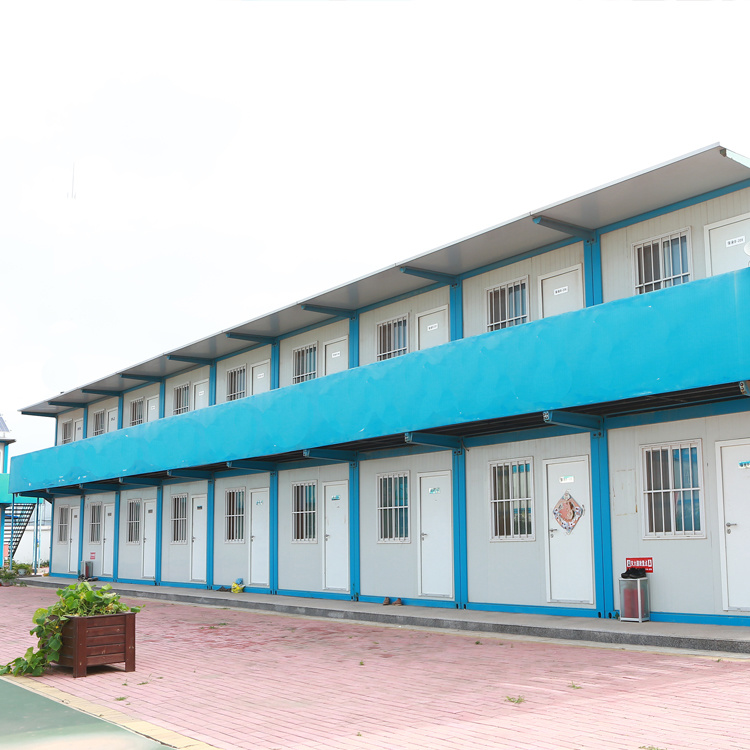Prefab Building Site Camp in the Philippines
Introduction
The Philippines is a nation characterized by rapid urbanization and development, leading to a growing demand for effective housing solutions. In various industries, particularly construction, providing suitable accommodations for workers is essential. Prefabricated building site camps have emerged as an innovative solution to meet these needs. This article explores the benefits, features, applications, and real-world examples of prefab building site camps in the Philippines.
The Importance of Worker Accommodation
Worker Welfare in Construction
In the construction sector, especially in remote or urbanized areas, temporary housing for workers is crucial. Proper accommodations ensure that workers can rest and recuperate, enhancing their productivity and overall well-being. Key factors include:
- Safety: Adequate housing protects workers from environmental hazards and promotes health.
- Comfort: Comfortable living conditions contribute to worker morale and retention.
- Efficiency: Proximity to job sites reduces travel time, allowing workers to focus on their tasks.
Challenges of Traditional Housing Solutions
Traditional housing methods often face numerous challenges, including:
- High Costs: Building permanent structures can be prohibitively expensive, especially in remote areas.
- Time Constraints: Conventional construction methods can be slow, delaying project timelines.
- Limited Flexibility: Permanent structures may not adapt well to changing workforce sizes or project durations.
Advantages of Prefabricated Building Site Camps
1. Cost-Effectiveness
Prefab camps are typically more cost-effective compared to traditional construction methods. By utilizing modular designs and efficient manufacturing processes, costs related to labor and materials are significantly reduced.
2. Quick Assembly
One of the primary advantages of prefab structures is their rapid assembly. Components are manufactured off-site and delivered ready to be assembled, minimizing the time needed for on-site construction. This efficiency is particularly beneficial in the fast-paced construction industry.
3. Enhanced Worker Comfort
These camps are designed with worker comfort in mind. Features often include:
- Private Bedrooms: Individual or shared rooms provide workers with personal space.
- Common Areas: Communal kitchens and dining areas foster social interaction among workers.
- Sanitary Facilities: Adequate bathrooms and laundry facilities ensure hygiene and comfort.
4. Flexibility and Scalability
Prefab camps can be easily scaled to accommodate varying workforce sizes. Whether housing a small team or a larger group, these structures can be adapted to meet specific project demands.
5. Durability and Resilience
Constructed from high-quality materials, prefab buildings are designed to withstand various environmental conditions. In the Philippines, where typhoons and heavy rainfall are common, these structures are engineered for durability and resilience.
Design Considerations for Camps
1. Site Assessment
A thorough site assessment is crucial before construction. Factors such as climate, terrain, and access to utilities will influence the design and layout of the building site camp.
2. Customization Options
Prefab camps offer various customization options to meet specific project needs. Options may include:
- Room Configurations: Different layouts for sleeping quarters to accommodate varying numbers of workers.
- Additional Facilities: Options for recreational areas, meeting rooms, or offices to enhance worker welfare.
3. Compliance with Local Regulations
All structures must comply with local building codes and regulations. This includes safety standards, zoning laws, and environmental considerations, ensuring that the camp is legally compliant and safe for occupants.
Applications of Prefab Building Site Camps
1. Construction Projects
Prefab camps are ideal for temporary housing at construction sites. They provide workers with comfortable accommodations close to their work areas, facilitating efficient project execution.
2. Infrastructure Development
In large infrastructure projects, such as highways or bridges, these camps serve as essential worker housing. Their quick assembly and adaptability make them suitable for such dynamic environments.
3. Disaster Recovery Efforts
In the aftermath of natural disasters, prefab camps can be rapidly deployed to provide housing for displaced individuals or emergency responders. Their resilience makes them a practical choice for temporary living solutions.
4. Industrial Sites
For industries like mining and oil exploration, prefab camps provide essential accommodation for workers in remote locations. These camps ensure that workers are housed comfortably, contributing to their overall efficiency.
Addressing Common Concerns
1. Quality of Prefabricated Structures
Concerns about the quality of prefab buildings are common. Lida Group addresses these concerns through rigorous quality control measures, ensuring that all materials and construction processes meet high standards.
2. Longevity and Maintenance
Questions regarding the durability and maintenance of prefab structures are also prevalent. Lida Group’s camps are designed for longevity and require minimal maintenance, making them a reliable choice for long-term projects.
3. Integration with Existing Infrastructure
Integrating new camps with existing site infrastructure can pose challenges. Lida Group collaborates closely with clients to ensure seamless integration, addressing logistical challenges and site-specific requirements.
The Future of Prefabricated Housing in the Philippines
Trends Influencing Prefabricated Housing
- Sustainability: As industries become more environmentally conscious, the demand for sustainable housing solutions will continue to rise. Prefab construction typically generates less waste and utilizes eco-friendly materials.
- Smart Technologies: The integration of technology into prefab housing, such as energy-efficient systems and smart home features, is becoming increasingly popular.
- Mobility and Flexibility: The need for adaptable housing solutions will drive the popularity of modular designs. As project needs change, these structures can be easily relocated or reconfigured.
Lida Group’s Commitment to Innovation
Lida Group is committed to continuous innovation in the field of prefabricated housing. By investing in research and development, the company aims to stay ahead of industry trends and deliver cutting-edge solutions to meet the evolving needs of labor accommodation.
Conclusion
The implementation of prefab double-story building site camps in the Philippines represents a significant advancement in worker accommodation solutions. With a focus on cost-effectiveness, quick assembly, and enhanced comfort, these structures provide essential support for workers in the construction, industrial, and disaster recovery sectors. As the demand for effective labor housing solutions continues to grow, prefab camps will play an increasingly vital role in accommodating the workforce, ultimately contributing to improved productivity and satisfaction in various industries.










